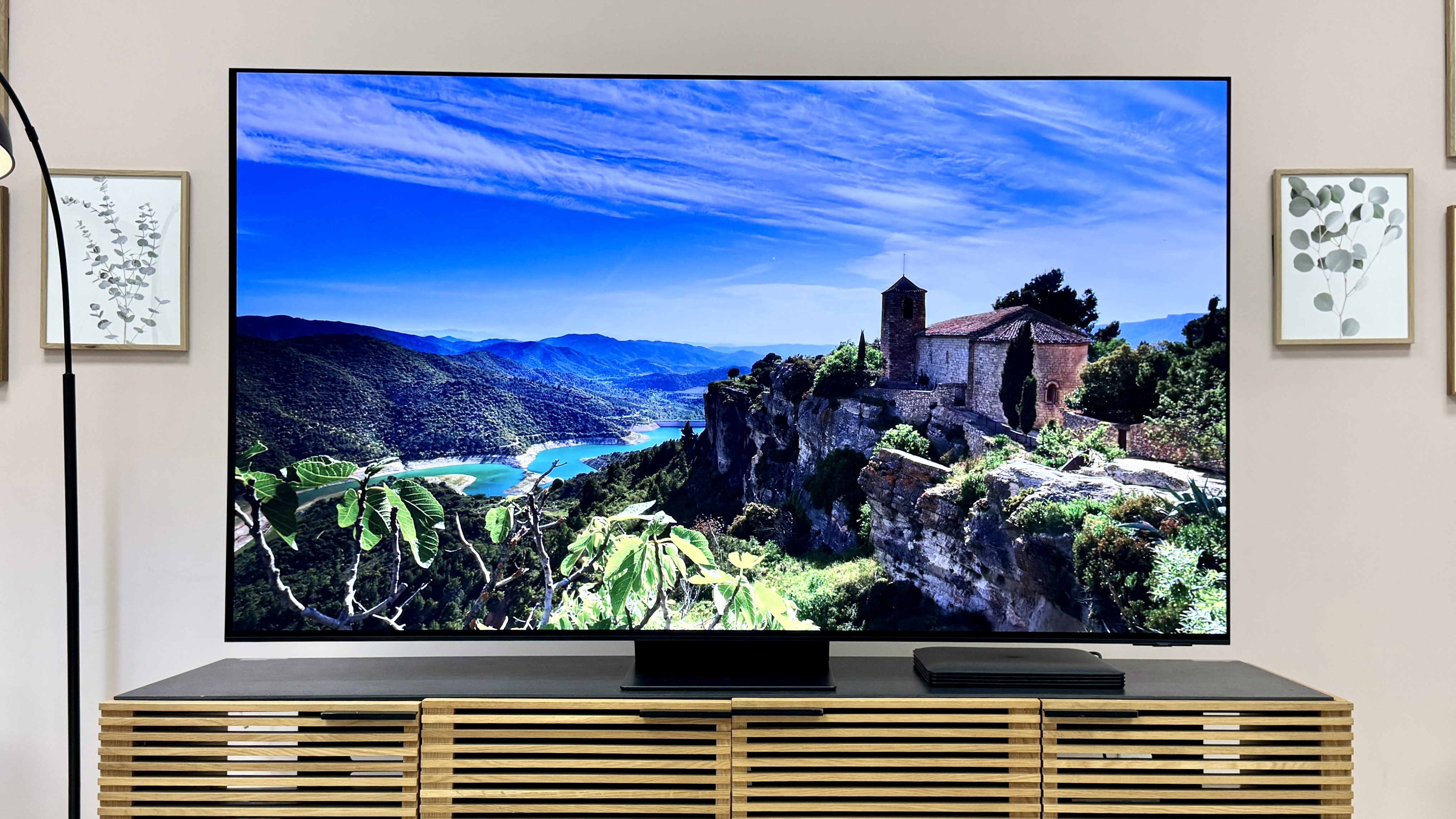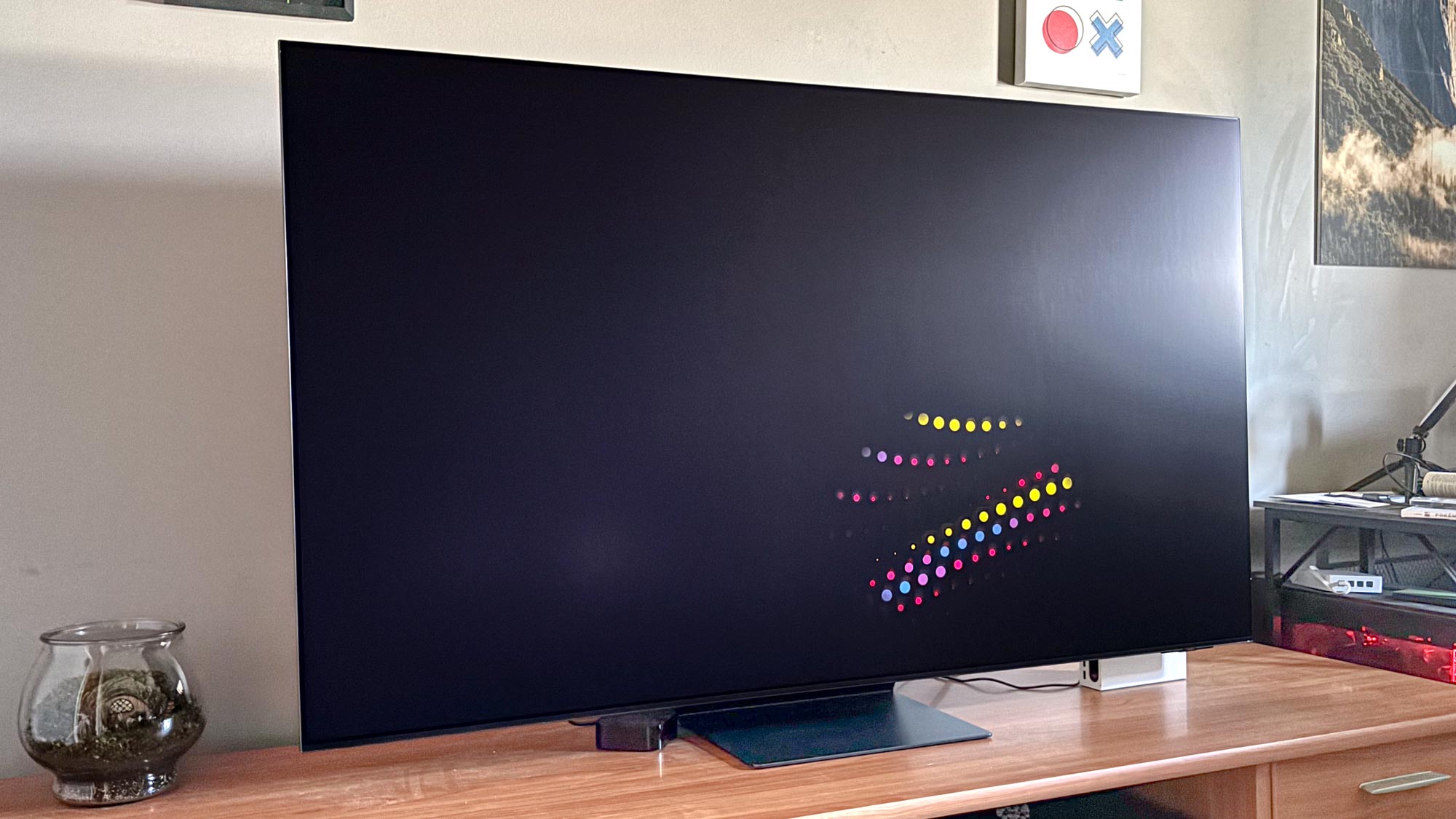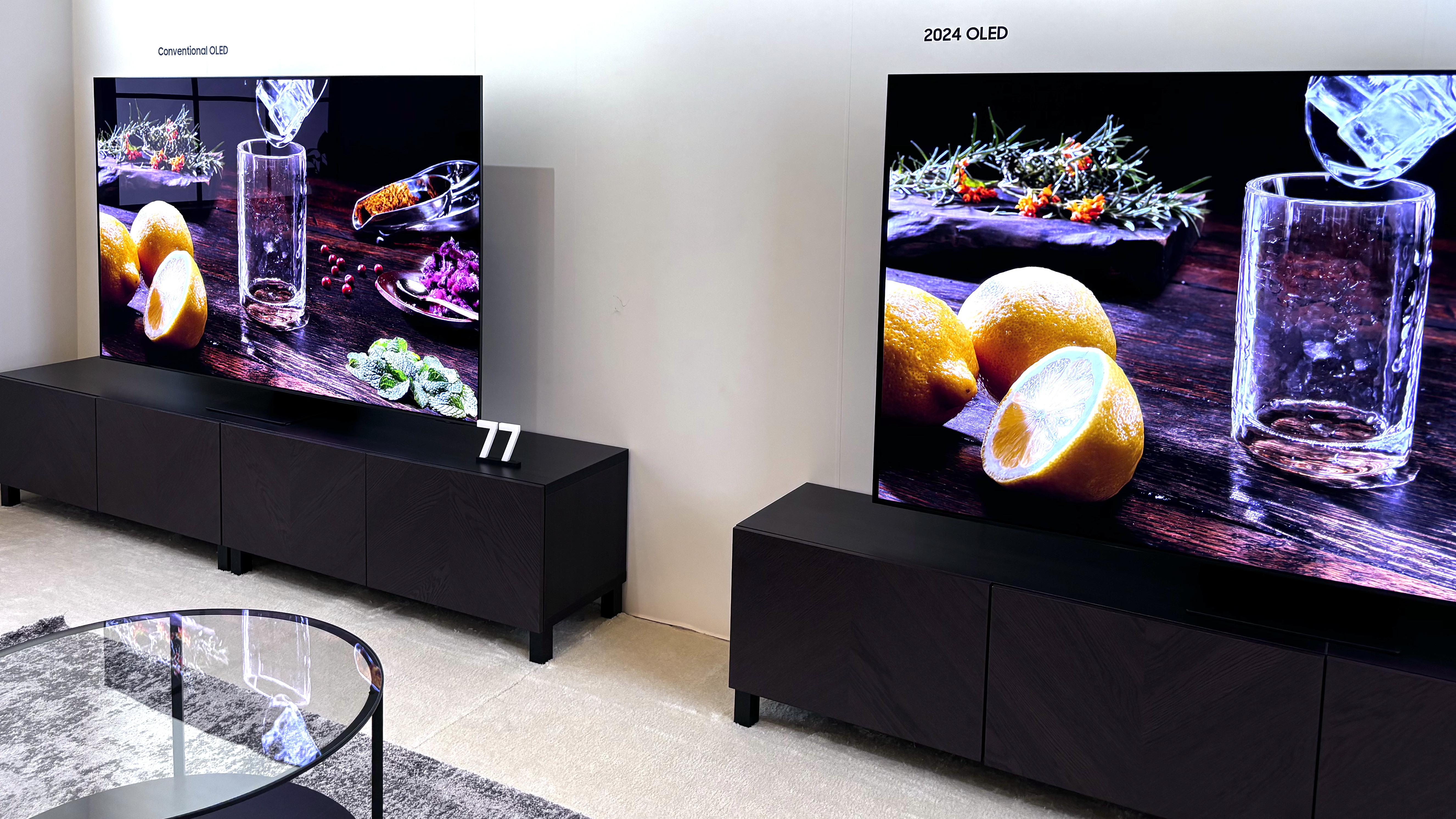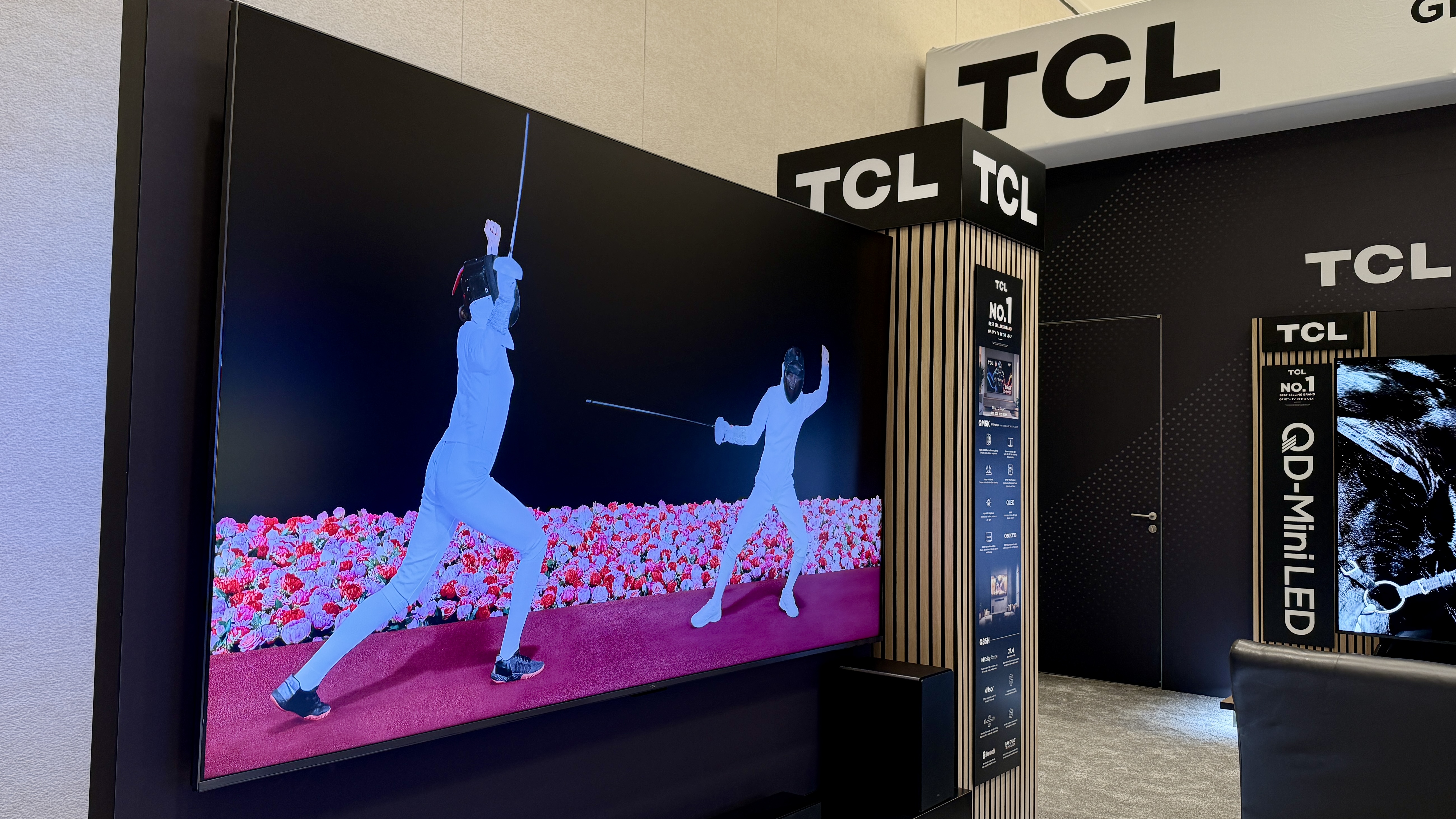I’m a TV reviewer — and this is the one design trend I’m getting tired of
A new type of screen is stealing the show

Take it from someone who peeps a lot of pixels: TVs are pretty much just big, gray rectangles.
Their underlying display technology and the software that drives them are rapidly evolving, but physical design trends don’t come along very often.
In the last couple of years, however, one seemingly simple design flourish has found its way into some of the best TVs on the market: matte displays.
Their purpose is to combat glare, but their surge in popularity has proven polarizing. And while I may not feel as strongly as others about the luster-free look, I’m nevertheless ready to cast my vote against it — at least in most circumstances.
Let me explain.
What are the benefits of matte TVs?
Matte displays — like the one found on the Samsung S95D OLED TV — are designed to reduce glare, thereby preserving the integrity of the picture.
They’re able to do this because the surface of the screen is sporting a finish that scatters light. TVs with glossy displays typically make use of anti-reflective coatings, too, but they don’t diffuse direct light nearly as effectively as these newly minted matte TVs.

Nick Pino, Managing Editor of TV and AV at Tom’s Guide, was an immediate fan of the first matte display he reviewed.
“You can put this TV in a bright room — even near a window — and still enjoy a vibrant picture,” Nick said in his review of the Samsung S95D.
It’s true. In my experience, matte displays (like those found all over Samsung’s 2025 TV lineup) turn big, bright blobs of light into soft swaths of near nothingness.
Since the release of the S95D, many TV brands have followed Samsung’s lead. The 85- and 98-inch versions of the TCL QM6K feature a matte finish, as does the 100-inch version of the Hisense U6QF.
But while it might seem like there are no downsides to be had with this style of screen, there is a serious tradeoff to most matte displays’ robust reflection handling.
But while it might seem like there are no downsides to be had with this style of screen, there is a serious tradeoff to most matte displays’ robust reflection handling. It’s a tradeoff that has kept me from warming up to this hot new design trend — and it’s not glaringly obvious.
Matte TVs vs glossy TVs

When a matte display scatters incoming light from, say, a window, it successfully stops that window-shaped reflection from appearing on the screen. That light doesn’t just go away, though; instead, it’s spread across the surface of the screen.
When a matte display scatters incoming light, black levels are lifted.
This has an effect on the picture, especially during dim content, like a dark movie or video game. Black levels are lifted, and near-black detail gets flattened out.
In this scenario, a glossy display might feature big, square-shaped reflection of a window, but the impact is more isolated — brighter, yes, but with a much sharper falloff.
In other words, a matte screen successfully blunts the impact of direct reflections, but it does so at the expense of detail and overall contrast. A glossy screen is far more susceptible to nagging reflections, but it does a better job of preserving a deep, detail-rich image, especially in the area of the screen surrounding the reflection.

There’s no discernible difference between the two screen styles in a dark room. With enough ambient light, their difference in presentation is easy to clock.
I’ve spent years admiring the best OLED TVs money can buy, and while I agree that both the S95D OLED and its successor, the S95F do an incredible job of virtually eliminating reflections, they often minimize the deep, inky patina I’ve come to associate with OLED TVs. That, to me, is a bummer.
But here’s the deal: It’s a matter of personal preference. How and when you watch TV matters, too, and you might find that a matte screen is the right choice for you.
Should you buy a TV with a matte screen?
Samsung’s anti-glare finish was so popular that the brand not only brought it back this year, but expanded its availability, too. Now, even Samsung’s 4K and 8K Mini-LED TVs feature the design flourish.
Having seen the matte display in action on Samsung’s 4K Neo QLED, the Samsung QN90F, I’ll freely admit that its effect on contrast doesn’t seem to be as pronounced on a bright Mini-LED display. I still don’t think I’m a convert, though.
If you can’t decide which of these two display styles deserves to be the next centerpiece of your living room or home theater, I recommend taking a trip to your local brick and mortar store to see both in action.
Additionally, ask yourself this: Do you watch a lot of TV during the day? Are you planning on putting a TV opposite a window or lamp?
If so, you’re probably better off going with a matte display, provided you’re choosing between the two options.

Lifestyle TVs that take their design cues from framed artwork benefit greatly from matte displays, as they more closely resemble the surface of an oil painting. TVs like Samsung’s The Frame and the Hisense Canvas TV are only available with matte displays, and given their overall design, I wouldn’t have it any other way.
Despite the recent influx of matte displays, TV-makers outside of Samsung are only using them on lifestyle TVs and models at 85 inches or above. For now.
If they keep selling at the speed they're going, however, we might just be looking at the light-dispersing tip of the iceberg.
More From Tom's Guide
Sign up to get the BEST of Tom's Guide direct to your inbox.
Get instant access to breaking news, the hottest reviews, great deals and helpful tips.

Michael Desjardin is a Senior Editor for TVs at Tom's Guide. He's been testing and tinkering with TVs professionally for over a decade, previously for Reviewed and USA Today. Michael graduated from Emerson College where he studied media production and screenwriting. He loves cooking, zoning out to ambient music, and getting way too invested in the Red Sox. He considers himself living proof that TV doesn't necessarily rot your brain.
You must confirm your public display name before commenting
Please logout and then login again, you will then be prompted to enter your display name.
